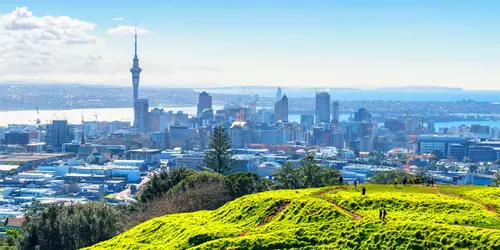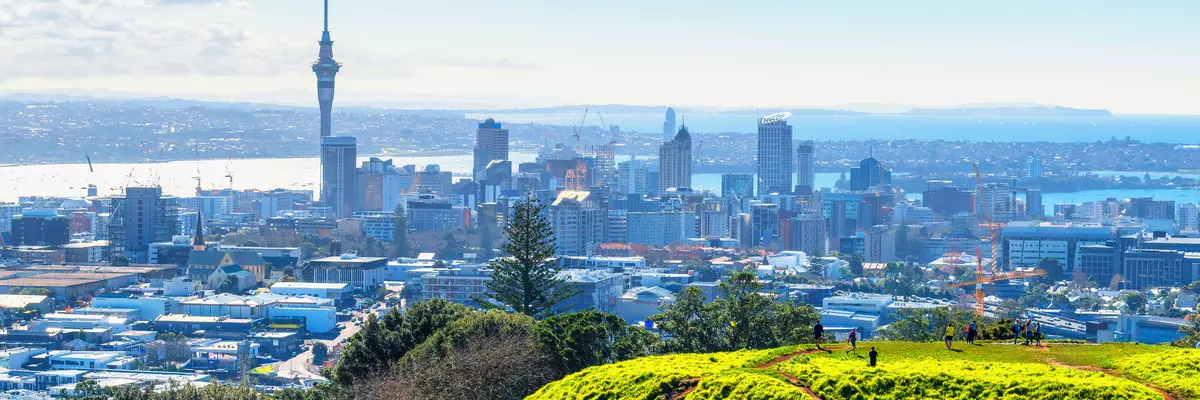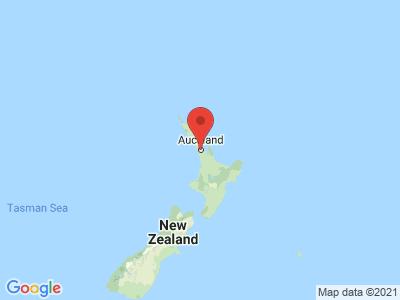Climate Table Auckland
Jan | Feb | Mar | Apr | May | Jun | Jul | Aug | Sep | Oct | Nov | Dec | |
|---|---|---|---|---|---|---|---|---|---|---|---|---|
| Max. Temperature | 23° | 23° | 22° | 20° | 17° | 15° | 14° | 15° | 17° | 18° | 19° | 21° |
| Min. Temperature | 15° | 16° | 14° | 13° | 12° | 9° | 8° | 8° | 9° | 11° | 12° | 14° |
| Sun Hours | 8 | 7 | 6 | 5 | 4 | 3 | 4 | 5 | 5 | 6 | 7 | 7 |
| Water Temperature | 19° | 20° | 20° | 18° | 17° | 17° | 16° | 15° | 15° | 16° | 18° | 18° |
| Rain Days | 10 | 8 | 10 | 13 | 12 | 8 | 7 | 8 | 9 | 11 | 10 | 8 |
The climate year of Auckland
Auckland, picturesquely situated between the Pacific Ocean and the Tasman Sea, is today a multicultural metropolitan area with a population of about 1.4 million people - one third of the population of the whole of New Zealand. Despite being a city of millions, Auckland is still very green and has extensive parks even in the inner city locations. The city was built over a volcanic field, which consists of about 50 inactive volcanoes. These have left a lasting impression on the landscape: Auckland is surrounded by ranges of hills as well as lakes and lagoons. The city is located on the North Island of New Zealand, where a mild, subtropical climate prevails. Travelers from Europe should keep in mind that New Zealand is located in the southern hemisphere and the seasons are therefore opposite to those in the northern hemisphere. The New Zealand summer is therefore from November to April. Auckland, however, is a year-round destination, as winters (which are in European summertime) rarely get cooler than an average of 14 °C. Probably the first and only snowfall in Auckland's history took place in 1939.
General information about Auckland
The city owes its nickname "City of Sails" to the countless sailboats that lie in the numerous marinas of the coastal area. The largest marina not only in Auckland but in the entire southern hemisphere is Westhaven Marina, with about 1400 berths, near the impressive 1100-meter Harbour Bridge. Due to the proximity to the sea, there are numerous bathing beaches in and around Auckland. On the east coast, for example, there are Long Bay, Devonport or Mission Bay white sand beaches, while the west coast beaches consist of volcanic black sand. Furthermore, Auckland has numerous museums (including the Auckland War Memorial Museum with exhibitions on the history of the Maori), a huge aquarium (Underwaterworld Auckland) and numerous parks.
Tourism Auckland
In Auckland it is never winter, but there is - as usual in the tropics and subtropics - a rainy season. This falls in the months between May and September, whereby it is particularly humid in July and August with an average of 20 rainy days per month. Nevertheless, even during the rainy season, the sun shines five hours a day, and temperatures range between 14 and 17 °C. In the New Zealand summer it is only slightly warmer with temperatures between 16 and 23 °C, but much drier. From November to February, the sun shines about seven hours a day, and there are about 10 rainy days per month. In New Zealand you should be prepared for unforeseen and sudden changes in the weather and especially for outdoor tours. Even the most beautiful weather can change suddenly and without warning.


